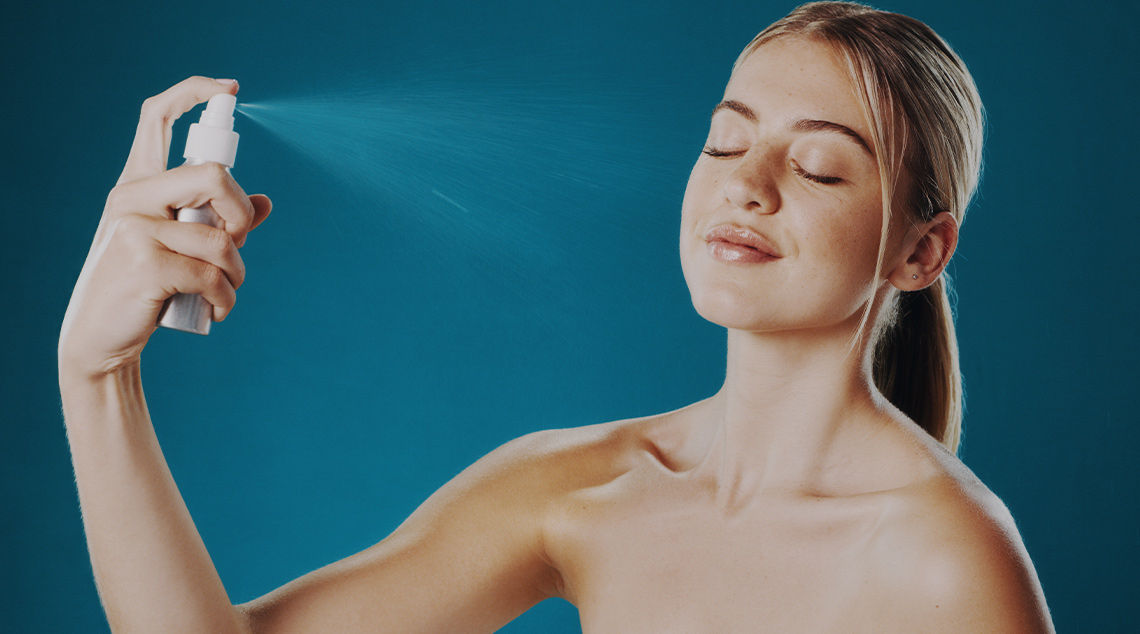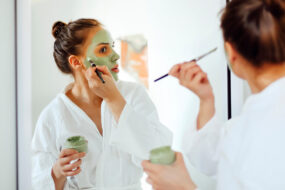Ready, set, spray. Lock in your make-up for a look that lasts
Tired of make-up that runs, smudges or fades? A setting spray will keep your look flawless. Here’s how these must-have beauty products work.
If you’ve gone to the trouble of applying make-up, you want it to last.
Enter setting sprays: A 2023 report confirms demand for these products has been driven by their touted ability to reduce the need for touch-ups and increase the longevity of make-up.
Make-up artist and content creator Danh Doan says setting sprays are a savvy way to maximise your make-up products.
“A good setting spray extends the wear of your make-up, so you aren’t wasting product on excessive touch-ups,” Danh explains.
On top of that, the Sydney-based make-up artist notes that these sprays improve the overall finish of make-up by “encouraging it to better melt into the skin, adding hydration and sometimes even adding a glow over the top”.
So, what exactly are setting sprays?
Cosmetic chemist Ginger King describes setting sprays as “the face equivalent of a light-hold hair spray – but without being super sticky”.
Ginger explains that setting sprays are usually made from “film-forming polymers, which are fixing chemicals that help make-up remain on the face for longer”.
“When applied, a setting spray forms a film over your make-up, which helps to retain it in place – just like a hairspray does,” the US-based product formulator says.
Danh adds that most setting sprays also contain solvent (alcohol), which works in tandem with the polymers.
“Once sprayed onto the skin, the solvent evaporates, leaving the polymers to merge (and) creating a film over your make-up,” Danh explains.
“Before the solvent evaporates, it also slightly dissolves your make-up, making it look more blended and finished.”
Do setting sprays actually work?
Yes – according to the experts.
Make-up artist Claudia Fabiani praises setting sprays as a “must-have to give your make-up serious staying power”.
“These lightweight formulas increase the lifespan of your make-up, as well as stopping it from melting, fading or setting into fine lines.”
In addition, Danh says the right type of setting spray can also enhance the overall appearance of your skin.
“Most setting sprays are either mattifying or hydrating,” Danh says.
“If you have oily skin, opt for a mattifying formula as it won’t add excess oil or shine to the face; if your skin is dry, a hydrating spray gives a dewy finish.”
How to use setting sprays
“Setting sprays are quick and easy to apply,” Claudia, of Wonder Day Spa in Sydney, says.
“You might want to reserve it as the final step in your make-up routine, or you can mist on a setting spray after each individual step – for instance after you’ve applied your foundation or eyeshadow.”
Danh says he’s a fan of both methods: “I like using it before I blend out my concealer to rehydrate my base products, and after I finish the whole make-up look.”
The experts say most setting sprays need to be shaken well before application and then left to dry for a few minutes.
“Start with a few spritzes – a little goes a long way,” Claudia says.
Danh adds you’ll instantly know if you’ve overdone it.
“When you’ve used too much setting spray, it leaves tiny droplets on the face and might even start to remove the make-up underneath,” he says.
More must-have make-up products and tools:
- Why you need cushion compact foundation in your life
- 5 backstage beauty products to add to your make-up kit
- How an eyelash curler can truly lift your look
- Why skin tints are glowing in popularity
- How a good make-up mirror can change your life
Written by Sharon Hunt.




